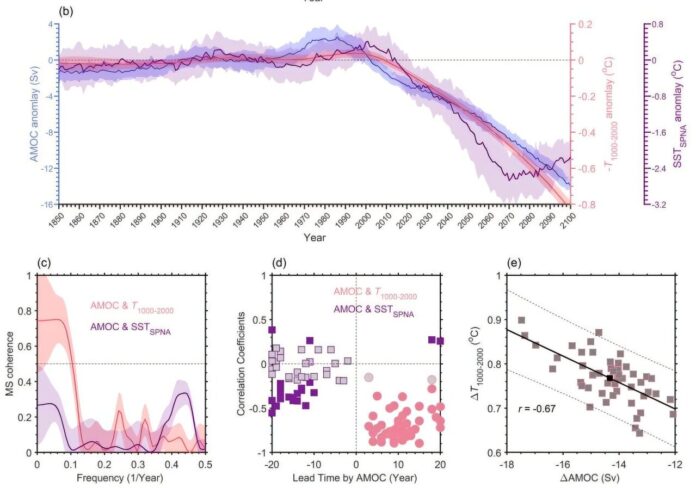The Atlantic Meridional Overturning Circulation (AMOC) is a powerful ocean current system crucial for global climate regulation. It acts like a giant conveyor belt, carrying warm water northward from the tropics and then returning cooler water southward. Most climate models predict this vital circulation will weaken as greenhouse gas emissions rise, but pinpointing exactly when and how much it’s slowed remains a challenge.
Now, scientists have discovered a telltale sign of AMOC weakening hidden within the Atlantic Ocean itself. Their research, published in Communications Earth & Environment, points to a warming trend at mid-depths (1,000 to 2,000 meters) in the equatorial Atlantic – a signature directly linked to AMOC changes.
Tracking Changes from Pole to Equator
To understand this connection, think of it like ripples spreading outward. The team, involving researchers from China’s Institute of Oceanology and institutions in the United States, used sophisticated climate models to trace how AMOC variations ripple through the ocean. They found that a weakening AMOC causes warming in the subpolar North Atlantic. This heat then generates waves called “baroclinic Kelvin waves” that travel swiftly eastward along the western edge of the North Atlantic, eventually reaching the equator and spreading further.
This process transforms the usually cooler depths near the equator into warmer zones – the very change detected in recent decades.
The Equatorial Atlantic: A Climate Crossroads
The equatorial Atlantic plays a pivotal role in this phenomenon. As lead author Prof. Li Yuanlong explains, “Our findings reveal that the equatorial Atlantic serves as a critical crossroads for AMOC-related dynamical signals to spread across the global ocean.” These mid-depth warming trends aren’t just local; they act as powerful messengers carrying information about changes far away in the North Atlantic.
Looking Beyond Surface Clues
Examining decades of observational data, the team confirmed this mid-depth warming trend emerged after 2000. Importantly, it stands out against typical natural ocean fluctuations, suggesting a genuine weakening of the AMOC that likely began around the late 20th century. This finding challenges previous assumptions that relied primarily on surface temperature readings, which can be misleading due to atmospheric variations.
By focusing on these deep-sea heat patterns, scientists now have a more reliable and consistent indicator for tracking changes in this critical ocean current.
Understanding AMOC’s trajectory is crucial because even slight weakening has wide-ranging consequences – from altering weather patterns to impacting regional marine ecosystems. This new research provides valuable insights into the complex interplay between the Atlantic Ocean, climate change, and our planet’s delicate balance.







































































